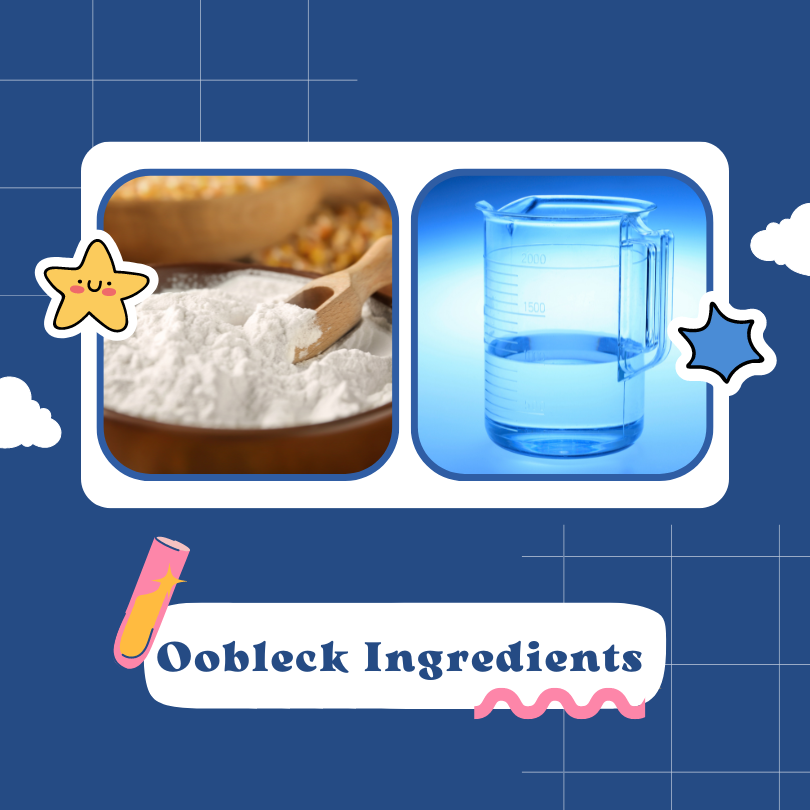
Table of Contents
Oobleck is a fascinating material made from just two ingredients: cornstarch and water. It’s a non-Newtonian fluid that behaves like a solid when pressure is applied and like a liquid when pressure is released. It’s a great introduction to science for kids because it shows how something can be both a solid and a liquid at the same time. This engaging and educational activity can help children understand the science behind this amazing material. Through hands-on experimentation, kids can learn about the properties of matter, viscosity, and surface tension. The activity can also help them develop problem-solving skills and a greater appreciation for the wonders of science.
What is a Non-Newtonian Fluid?
A non-Newtonian fluid is a type of fluid in which the viscosity (thickness) changes based on applied shear stress. To be more specific, when stress is applied to a non-Newtonian fluid, it becomes thicker; when the stress is released, it returns to its original thickness. Non-Newtonian fluids can also behave like a solid when pressure is applied. Oobleck is a type of non-Newtonian fluid made from cornstarch and water.
Safety Considerations
Though it is made out of cornstarch and water, it is not edible and should not be consumed. Working with oobleck can be a messy activity, so be sure to have a large surface space available for exploration. Put down a drop cloth or newspaper to protect your floor. Before beginning, make sure kids are wearing clothes they don’t mind getting dirty.
Ingredients & Directions

Making oobleck is easy and can be done with just two ingredients: cornstarch and water. It can be tailored to different ages by adjusting the amount of water used. For younger kids, use about 1/2 cup of water per 3 cups of cornstarch. For older kids, use 1/3 cup of water per 3 cups of cornstarch.
The Science Behind Oobleck
The reason this goop exhibits these strange properties is due to the way the cornstarch particles are arranged in the water. When you apply pressure, the cornstarch particles are squeezed together, and they resist the pressure, causing the oobleck to feel solid. When you release the pressure, the cornstarch particles are able to move around more freely, and it flows like a liquid.
Cleaning Up After
As with any messy activity, oobleck exploration can leave the floor pretty messy. To clean up, first remove any large pieces of oobleck and wipe the floor with a wet sponge or cloth. Then, use a broom to clean up any remaining residue and a combination of soap and water to wipe down the floor. The remaining oobleck can be left to dry, then swept up and discarded. You can also place it in the compost bin since it is biodegradable, so it can be safely composted.
Include a Story Time
Bartholomew and the Oobleck is a Dr. Seuss classic that explores the wonders of science with a funny story about a king and his obsession with oobleck. It’s a great way to introduce kids and can be used as a starting point for exploration. Read the book together, then set out supplies for kids to play with oobleck. Turn it into a creative activity by encouraging kids to create art or sculptures.
Conclusion
This non-Newtonian fluid that is fascinating and educational to explore. It can help kids understand the properties of matter, viscosity, and surface tension. By experimenting, kids can discover how different forces affect matter. They can also develop greater critical thinking skills and a better appreciation for the wonders of science.
Comment below how your kids (and you!) enjoyed the oobleck lesson!
Check out my other posts!



